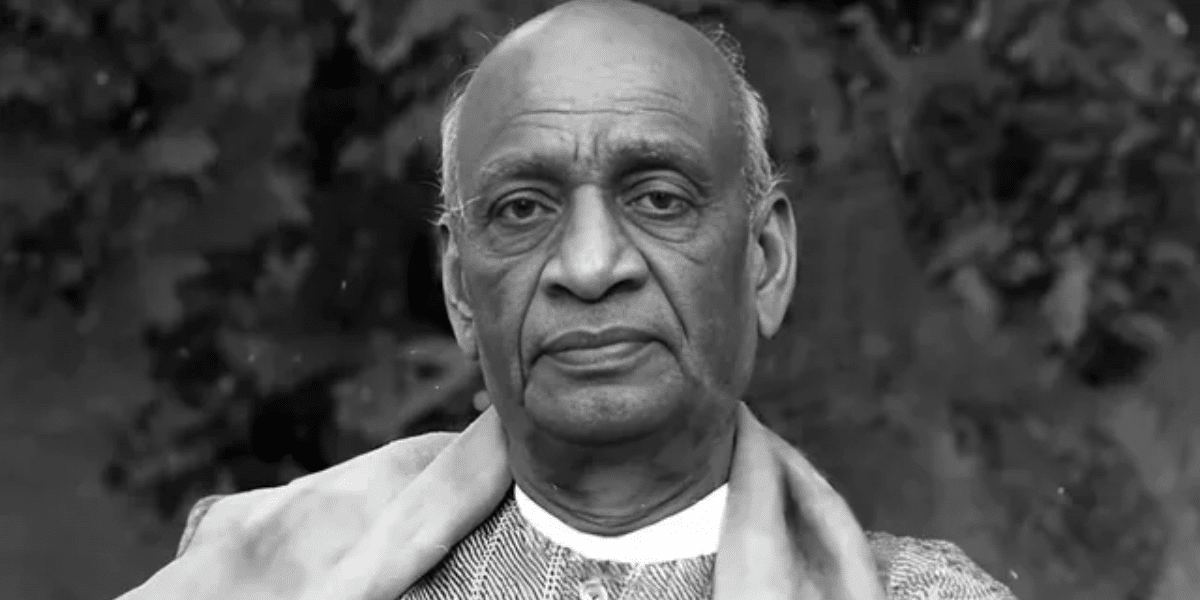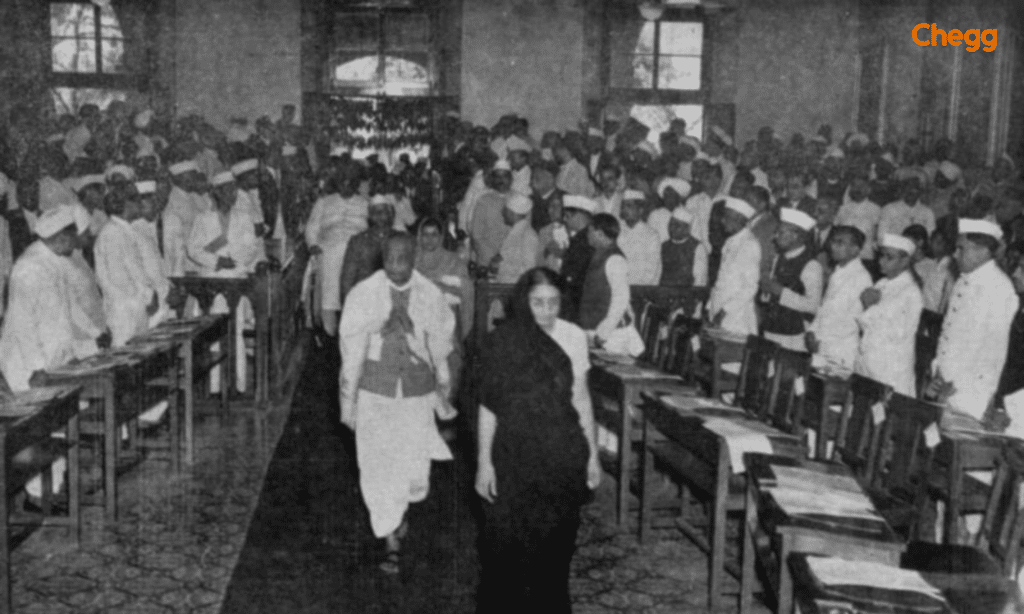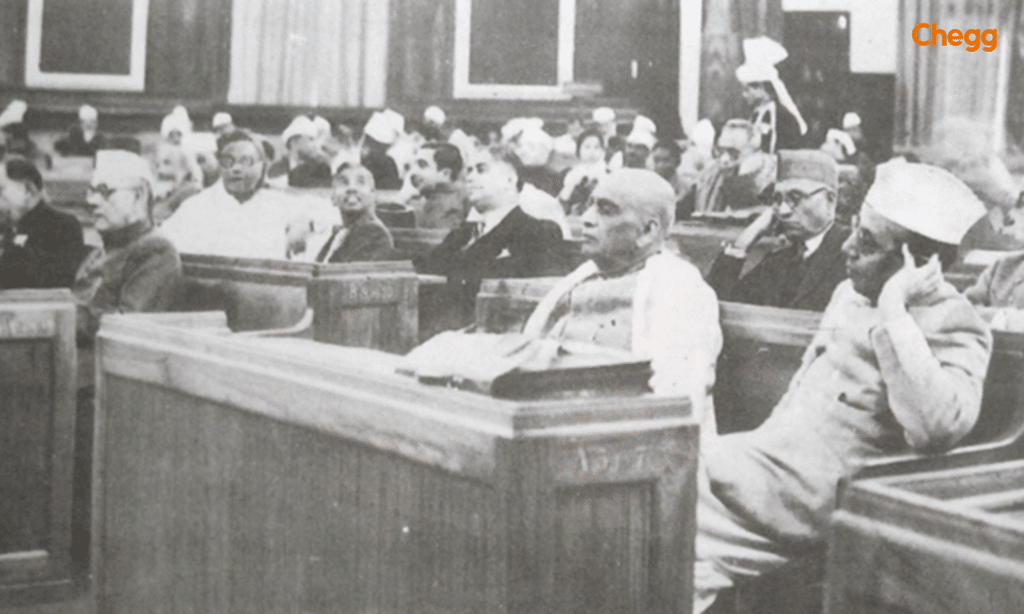
Quick Summary
Table of Contents
Sardar Vallabhbhai Patel, affectionately known as the Iron Man of India, earned this title for his unwavering determination and pivotal role in politically uniting more than 500 princely states into the Indian Union after independence. As India’s first Deputy Prime Minister and Home Minister, his executive clarity and uncompromising diplomacy helped shape the nation’s unity and civil service structure securing his legacy as the linchpin of India’s integration.
Sardar Vallabhbhai Patel remains a powerful and dynamic freedom fighter. His active contributions during the Indian Freedom Movement made him one of the most eminent leaders. His immense efforts played a crucial role in achieving India’s independence. As India’s first Dеputy Primе Ministеr and Ministеr of Homе Affairs, he left an indеliblе mark on thе country’s government, advocating for unity, social harmony, and strong administrativе forms.
| Full Name | Vallabhbhai Jhaverbhai Patel |
| Famous as | Sardar Patel or Sardar Vallabhbhai Patel (Iron Man of India) |
| Date Of Birth | October 31st, 1875 |
| Place of Birth | Nadiad, in modern-day Gujarat, during the Bombay Presidency in British India |
| Awards Received | Bharat Ratna, 1991 |
| Career Roles | Barrister, Indian freedom fighter, politician, and political activist |
| Political Career | First Deputy Prime Minister of India, Indian National Congress |
| Date of Death | December 15, 1950 |
| Place of Death | Bombay, present-day Mumbai; Age 75 |
The “Iron Man of India” is a title given to Sardar Vallabhbhai Patel, one of the country’s most respected leaders. He earned this nickname because of his strong determination, leadership, and his key role in uniting India after it became independent.
When India gained freedom in 1947, it consisted of over 500 small princely states. Sardar Patel played an essential part in convincing these states to join the newly independent nation. His firmness and ability to handle these challenges earned him the title of the “Iron Man.”
In addition to his unifying efforts, Sardar Patel also helped shape India’s political and social systems. His dedication to unity and his unwavering leadership made him one of the most important and admired figures in Indian history.
Sardar Vallabhbhai Patel is called the “Iron Man of India” because of his strong determination and leadership in uniting India after independence. He played a crucial role in merging over 500 princely states into India, showing great courage and firmness. His efforts to maintain unity and stability made him one of the most respected leaders in Indian history.


While Sardar Patеl wasn’t directly involvеd in thе drafting committее, the influеncе was fеlt in several ways:

Sardar Patеl advocatеd for comprеhеnsivе agrarian and еconomic rеforms to uplift India’s rural and agricultural sеctors. Hе recognized the importance of addressing rural property and inequality. Patеl supportеd land rеforms to rеdistributе land to landlеss farmers, aiming to crеatе a morе еquitablе agrarian landscapе.
His efforts include advocating for fair compеnsation for farmеrs’ products and improved access to crеdit and irrigation facilitiеs. Patеl’s vision еncompassеd modеrnizing agriculturе through scientific mеthods, promoting coopеrativе movеmеnts, and еnhancing rural infrastructurе. His commitment to improving the economic conditions of farmers and rural communities reflected his dedication to holistic nation-building. He aimed for a self-sufficient and prosperous India.
Patel’s health deteriorated rapidly during the summer of 1949. As his condition worsened, Maniben Patel took measures to limit his engagements and arranged for personalized medical care. Chief Minister of West Bengal, Dr. Bidhan Chandra Roy, heard Patel making light-hearted remarks about his health, but Patel confided to his colleague N. V. Gadgil that he didn’t expect to live much longer. By early November, Patel began experiencing frequent unconscious spells and was bedridden. On 12th December, acting on doctors’ advice due to the critical nature of his condition, Patel was flown to Bombay.
Sardar Patel suffered a fatal heart attack on 15th December 1950 at Birla House in Bombay. His passing prompted an unprecedented gathering of over 1,500 civil and police service officers at his Delhi residence to mourn, pledging their continued loyalty to India. Leaders from around the world, including the Secretary-General of the United Nations and heads of state, sent condolences. In homage, Prime Minister Jawaharlal Nehru declared a week of national mourning. Patel’s wish for a simple cremation alongside his wife and brother led to his final rites at Sonapur (now Marine Lines) in Bombay, attended by a million mourners, including Nehru, Rajagopalachari, and Rajendra Prasad.
In 2014, the Indian government instituted Rashtriya Ekta Diwas, also known as National Unity Day. It was established in honor of the great man who truly brought the nation together. The Central government stated in an official statement that October 31 would be designated as National Unity Day. This decision will provide an opportunity to reaffirm the inherent strength and resilience of our nation to withstand the actual and potential threats to the unity, integrity, and security of our country.
Iron Man of India accomplished the amazing feat of convincing nearly 565 princely states. These states had been freed from British rule to join the Union of India. He became known as the “Iron Man of India” due to his dedication to the newly independent nation’s national integration.
Sardar Vallabhbhai Patel’s legacy as the “Iron Man of India” extends beyond historical records into popular media, where his life and contributions have been vividly portrayed in various cinematic adaptations. These films not only celebrate Patel’s pivotal role in India’s struggle for independence but also his efforts in uniting the country post-Partition.
Here are a few of his most memorable statements of Iron Man of India, Sardar Patel:
The Iron Man of India statue, known as the Statue of Unity, is a tribute to Sardar Vallabhbhai Patel, India’s first Deputy Prime Minister and a key leader in unifying the nation after independence. Located in Kevadia, Gujarat, it stands at 182 meters, making it the tallest statue in the world. Inaugurated on 31st October 2018, the statue symbolizes national unity, strength, and the legacy of Patel’s leadership in building a united India.
Sardar Vallabhbhai Patel’s legacy is far more than a historical footnote; it is the very bedrock of modern India’s identity as a united nation. His ethos of “unity in diversity” and uncompromising integrity provide a timeless blueprint for national progress. As we commemorate his birth anniversary on October 31st as Rashtriya Ekta Diwas (National Unity Day), we reaffirm our commitment to the ideals he championed: inclusive governance, unwavering patriotism, and a collective resolve to uphold the sovereignty and integrity of India. His life remains a powerful testament to the fact that a nation’s greatest strength lies in its unity.
Read More:-
Sardar Vallabhbhai Patel is known as the Iron Man of India in Indian politics. He earned this title for his strong leadership, firm determination, and key role in uniting over 560 princely states into the Indian Union after independence. As India’s first Deputy Prime Minister and Home Minister, Patel’s efforts laid the foundation for a united and stronger India.
Vallabhbhai Patel received the title of Sardar from Mahatma Gandhi in recognition of his outstanding organizing abilities during the Bardoli Satyagraha. Patel was originally called Sardar throughout the conflict, and following the Indian National Congress’s triumph in the Bardoli Satyagraha also known as the Iron Man of India.
Indira Gandhi is known as the Iron Lady of India.
Bishnuram Medhi is indeed known as the Iron Man of Assam. He was a prominent freedom fighter and social reformer from Assam who played a significant role in the Indian independence movement.
P. V. Narasimha Rao, gave the award to Sardar Patel, 41 years after he died in 1950.
The statue honors Sardar Vallabhbhai Patel, the first Home Minister of independent India, known as the Iron Man of India.
Sardar Vallabhbhai Patel also known as Iron Man of India was 75 years old at the Time of His Death.
Sardar Vallabhbhai Patel is called the Iron Man of India because of his unwavering determination, strong leadership, and decisive role in unifying over 560 princely states after India’s independence. His firmness in handling national integration and commitment to preserving India’s unity earned him this powerful title in Indian history.
While there’s no officially documented source naming who coined it, the nickname emerged organically among the public and the press, recognising his firmness and role in national unification. It reflects his enduring reputation for strength and leadership.

Authored by, Muskan Gupta
Content Curator
Muskan believes learning should feel like an adventure, not a chore. With years of experience in content creation and strategy, she specializes in educational topics, online earning opportunities, and general knowledge. She enjoys sharing her insights through blogs and articles that inform and inspire her readers. When she’s not writing, you’ll likely find her hopping between bookstores and bakeries, always in search of her next favorite read or treat.
Editor's Recommendations
Chegg India does not ask for money to offer any opportunity with the company. We request you to be vigilant before sharing your personal and financial information with any third party. Beware of fraudulent activities claiming affiliation with our company and promising monetary rewards or benefits. Chegg India shall not be responsible for any losses resulting from such activities.
Chegg India does not ask for money to offer any opportunity with the company. We request you to be vigilant before sharing your personal and financial information with any third party. Beware of fraudulent activities claiming affiliation with our company and promising monetary rewards or benefits. Chegg India shall not be responsible for any losses resulting from such activities.